The Taj Mahal: 9 interesting facts + 11 travel tips
The following is a guest post written by Shweta Singhal.
The Taj Mahal in India is an iconic monument, designated as a UNESCO World Heritage site in 1983. This ‘symbol of love’ was adjudged as one of the new seven Wonders of the World. Taj Mahal is a must-see tourist attraction on any India itinerary for a first-time visitor, especially those who do the Golden Circle route (Delhi – Agra – Jaipur).
This article contains affiliate links. If you click on one and make a purchase, I (Rachel) will receive a small commission. This will not affect your price.
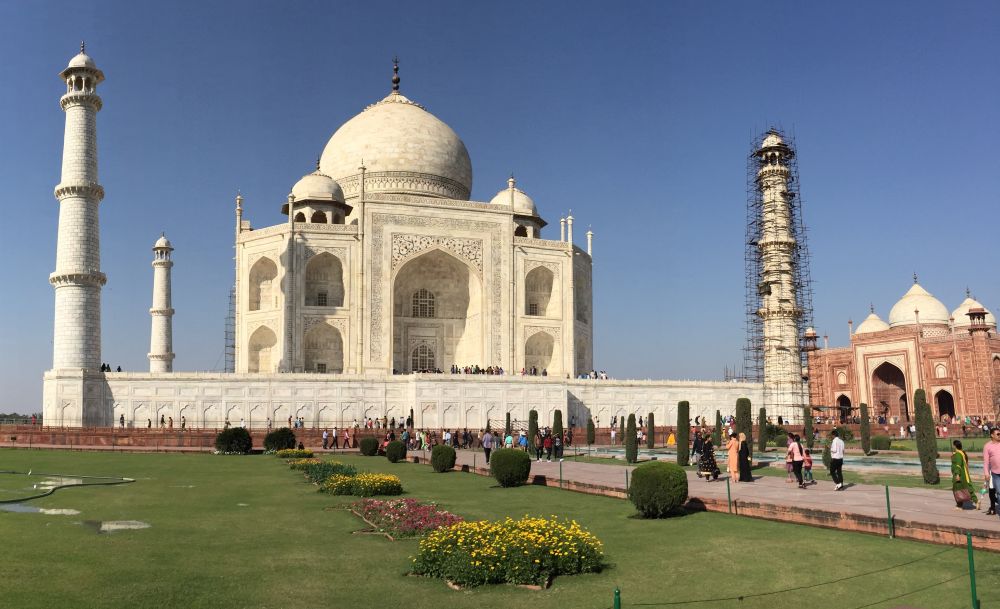
Brief history of the Taj Mahal
1. Who built the Taj Mahal and why?
It was built by Mughal emperor Shah Jahan as the final resting place and monument of love for his wife, Mumtaz Mahal, after she died in childbirth. It was her 14th child.
The ones who did the actual work, though, were the 20,000 workers who worked on it.
Shah Jahan had about 10 wives. He was engaged to Mumtaz Mahal when she was 14, but didn’t marry her for five more years. In the meantime, he already had one or two other wives – stories differ – and more came along later. However, it seems that the others were all political marriages, while Mumtaz Mahal was the love of his life. They had 14 children together, and by some accounts he had no children by any of the other wives.
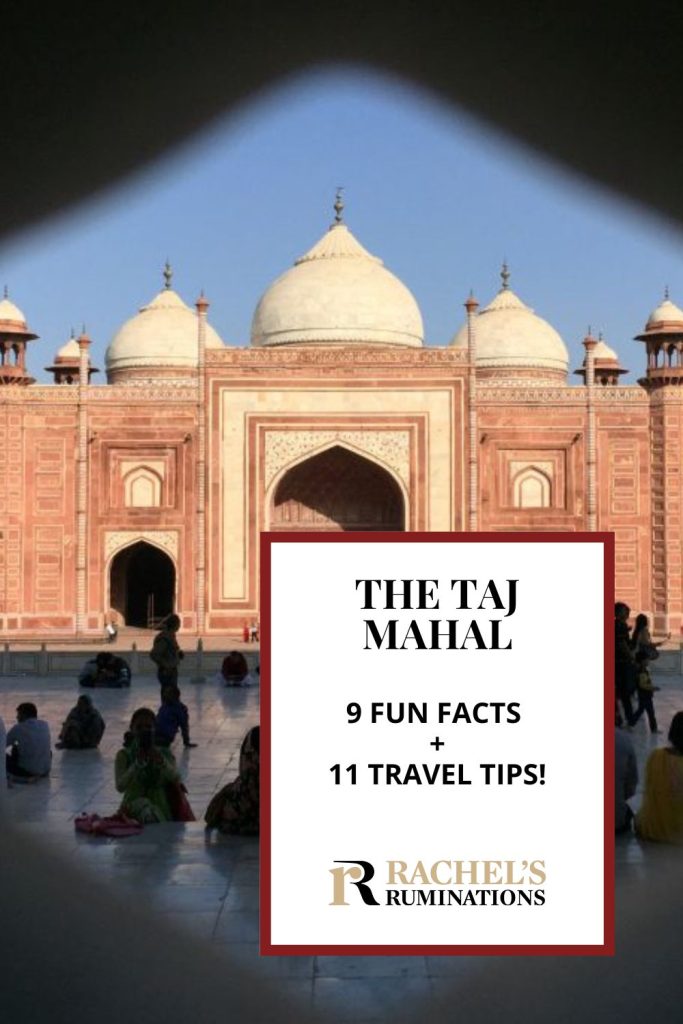
2. How long did it take to build the Taj Mahal?
Construction of the Taj Mahal started in 1631 but was not completed until 1653, so it took 22 years. Its completion was not a joyous occasion for the emperor. By that time his son, Aurangzeb, had overthrown him, taken the throne, and locked his father up. The tomb contains the body of Mumtaz Mahal and later, Shah Jahan was buried next to her.
3. What does the name “Taj Mahal” mean?
While it originally had another name, the name that is used today means “crown of palaces.”
Architecture of the Taj Mahal
4. What makes the design of the Taj Mahal so special?
The Taj Mahal is among the very finest example of Mughal architecture in India. It has become a symbol of India as a whole. Its architecture showcases a fusion of Persian, Islamic, and Indian styles. The use of white marble was not common at the time; the architectural design is inspired by earlier Indo-Islamic and Mughal buildings.
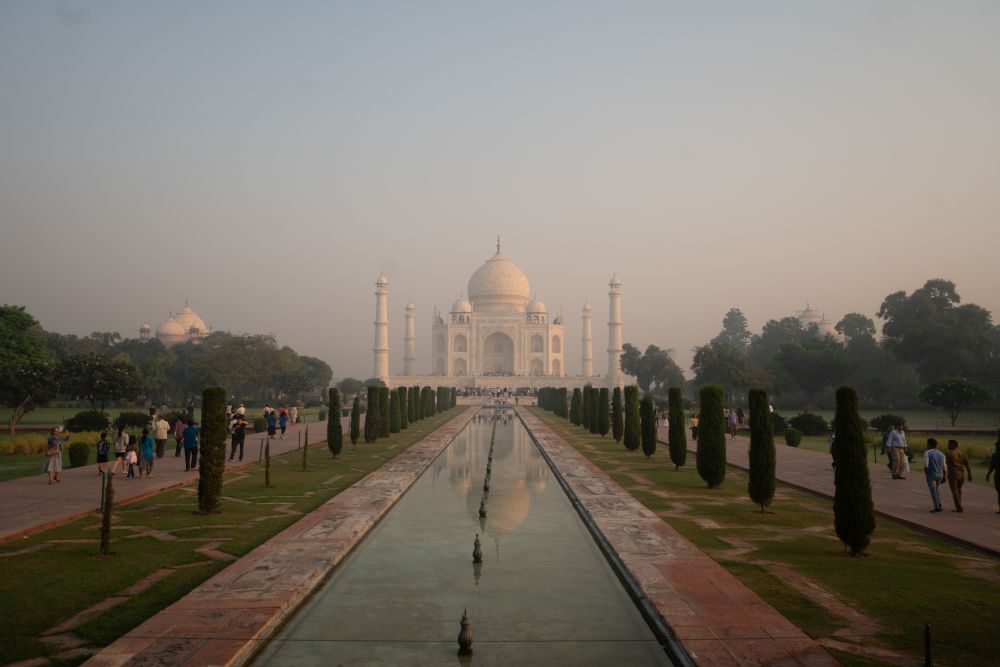
5. How big is the Taj Mahal?
The mausoleum is huge! According to Wikipedia, the dome is almost 34 meters (115 feet) high and sits on a cyclindrical section that adds another 7 meters (23 feet) to its height. Altogether, the building is 73 meters (240 feet) at its tallest point, and the Taj Mahal’s minarets are over 40 meters (130 feet) high.
The entire mausoleum complex covers 17 hectares (42 acres). It includes a mosque and a guest house as well as formal gardens. The most famous image of the Taj Mahal is the view down the central axis of the complex, looking along the long reflecting pool in the formal gardens, but there are also other pools incorporated into the garden design.
6. Is it all entirely symmetrical?
The only thing that breaks the perfect symmetry in the Taj Mahal is Shah Jahan’s cenotaph in the crypt. It was added after he died in 1658.
7. What is the Taj Mahal made of?
The symmetrical main building is made of white marble with semi-precious stones inlays, painted calligraphic inscriptions, stucco and stone carvings. The designs show both Persian and Hindustani influences.
Since the Muslim tradition forbids showing human forms, the decorations both inside and outside are more abstract or calligraphic. The inlays use stones like lapis lazuli, jade and turquoise in complicated patterns. The calligraphy, designed by Amānat Khan al-Shīrāzī, comprises quotations from the Koran. Interestingly, the size of the lettering increases with distance to create a consistent appearance.
Some of the other buildings, including the mosque and its jawāb, set symmetrically on either side of the mausoleum, are made of red sandstone, which was the more usual material used in the Mughal period. So is the arched gateway at the southern end of the complex.
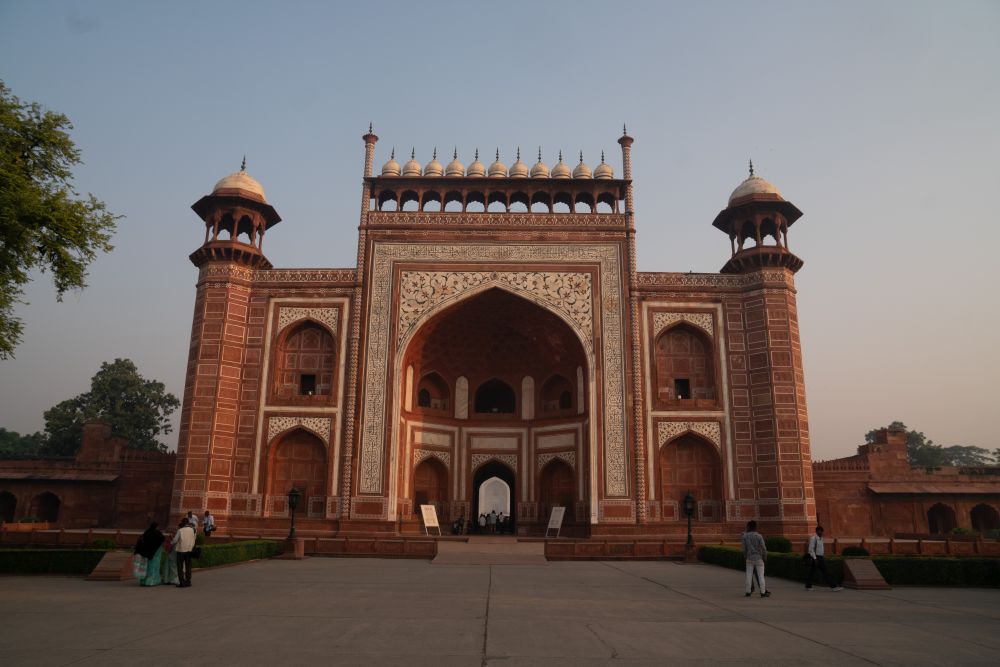
8. Where is the tomb itself?
The whole main building is the mausoleum, and there are fake sarcophagi of the Shah and his wife in the main chamber of the mausoleum. The actual burial place, though, is below, in a crypt. In contrast to the beautiful architecture and detailed ornamentation above, the crypt is quite simple and plain, though the caskets are decorated elaborately with gems.
Find accommodations in Agra, India.
9. What is in the Taj Mahal complex besides the famous building?
The south, east and west entrances all lead into the Chowk-i-Jilo Khana forecourt. Once through the gateway from the Chowk-i-Jilo Khana, you’ll see the Taj itself at the end of the huge charbagh (charbagh means four gardens). The four gardens represent the four gardens of paradise that appear in the Koran.
At the far end of the charbagh, there is a high square marble platform on which the mausoleum itself sits. On either side of the mausoleum are the mosque and its twin jawāb. The jawāb was built purely to preserve the complex’s symmetry, balancing out the mosque opposite.
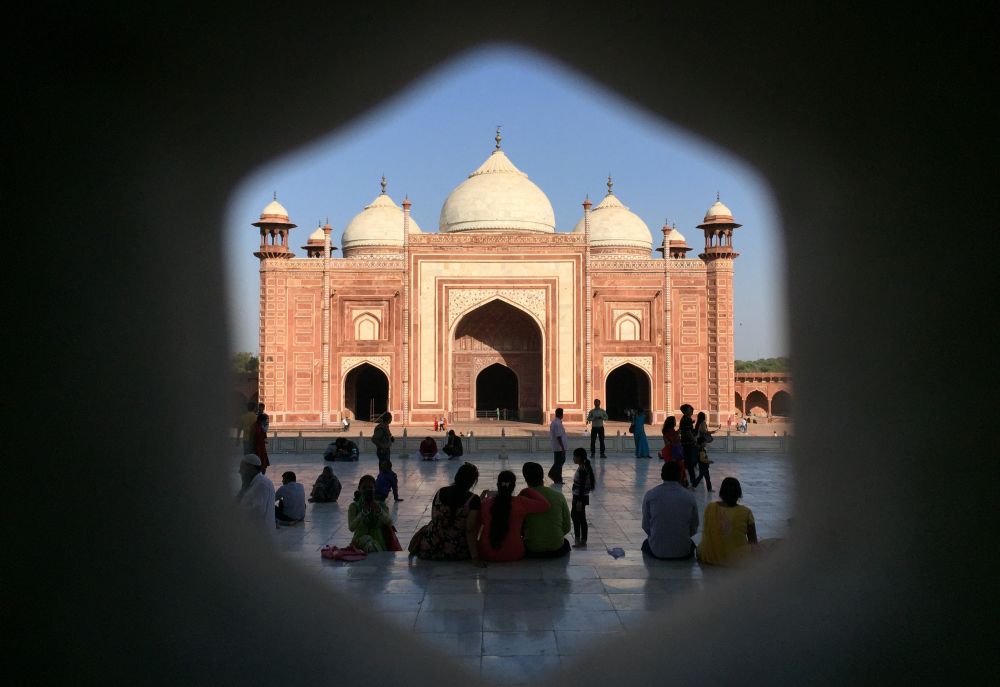
Travel tips for visiting the Taj Mahal
1. What’s the best way to see the complex?
Don’t just see the Taj Mahal from afar. Make sure to get up close and personal with each of the buildings to admire the craftsmanship of their details. The inlay work of coloured stone in marble to create large-scale calligraphic work is superb. So is the skilled inlaying of gemstones (called pietra dura) into white marble on a small scale to create some of the finest examples of such work of that era. There is also a museum within the complex that has miniature paintings and other artefacts.
2. When is the best time to visit the Taj Mahal?
The best season to visit Taj Mahal is between November and February. The weather during this period is pleasant, with mild temperatures. You can visit in the shoulder season of October and March as well. Agra can be hot, dusty and crowded so avoid summer and monsoon months completely.
As for time of day, the best time to visit the Taj is sunrise. The early mornings are cooler, the light is perfect for photography and the crowds are smaller.
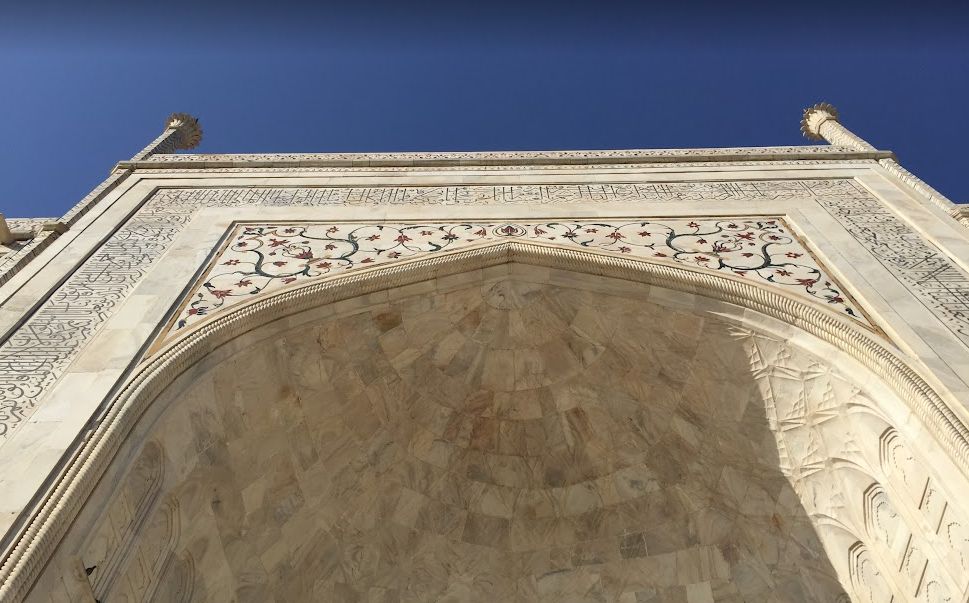
3. Will it be crowded?
This is an immensely popular attraction – 7-8 million visitors a year, according to Wikipedia – so expect large crowds at the site. If you make the effort to wake up at dawn and go early in the morning to visit the site, you will be rewarded with seeing the monument in beautiful light and also with fewer people. The Taj Mahal is closed on Fridays, so plan your visit on other days. Expect even larger crowds over weekends, so try and schedule a visit on a weekday, if possible.
4. Where is the Taj Mahal?
The Taj Mahal is located in the city of Agra, within a state named Uttar Pradesh.
5. How do I get to Agra?
Agra is well connected to other Indian cities. If your entry point to India is the capital city of Delhi, you can take a train (there are several options available) or a road trip to reach Agra. The Yamuna Expressway opened in August 2012 and has reduced the travel time by road from Delhi to Agra to under 3 hours.
Compare rental car prices from the airport in New Delhi.
Agra is also well connected to Mumbai and cities in Rajasthan. It is easy to combine a visit to Taj Mahal with any Rajasthan itinerary.
Alternatively, you can fly to Agra from many major Indian cities.
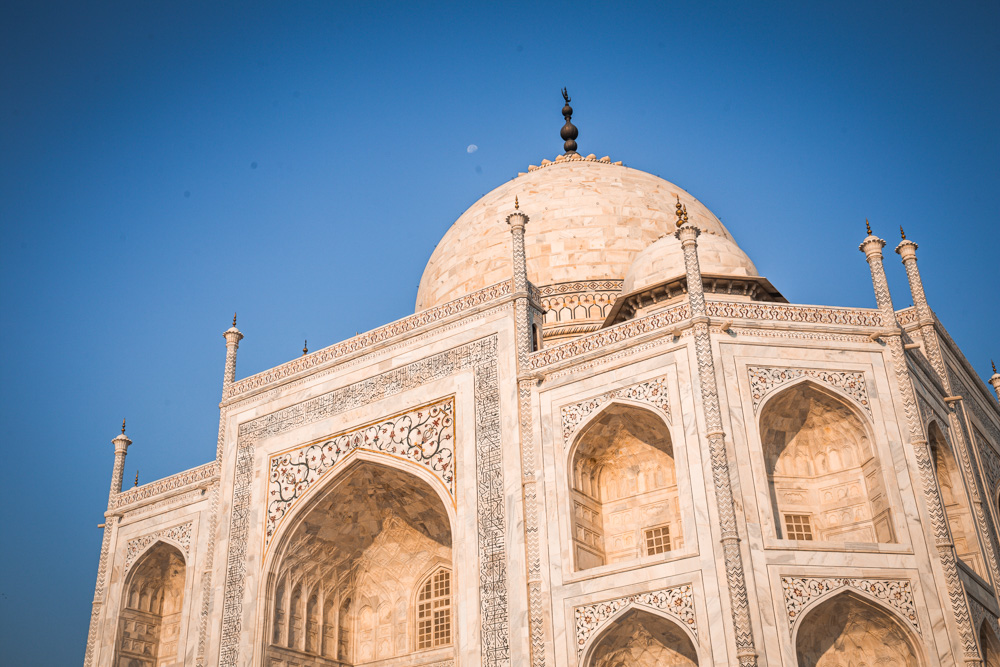
6. Should I book my tickets in advance?
Although tickets can be purchased at the East and West gates, you should book tickets to this popular attraction in advance. The ticket office is located about 10 minutes’ walk away, so it is best to reach the site after booking tickets online.
Buy skip-the-line tickets that include a tour here.
Taj Mahal tickets (without a tour guide) are priced at INR 1100 (~USD 15) for foreigners and INR 540 (~USD 7) for Indians and citizens of SAARC.
Entry to the actual mausoleum of the Taj Mahal is limited to a specific number of visitors at a time to ensure preservation and safety.
You can enter from either the East or the West gate. Currently, the South Gate is used only as an exit. There are counters at both gates specifically for foreign tourists.
7. When is the Taj Mahal open?
The Taj Mahal opens 30 minutes before sunrise and closes 30 minutes before sunset, usually around 6 a.m. to 7 p.m. It is closed on Fridays for prayers. It is also open each month (except for Ramadan month) for about five nights for night viewing: two days before and two days after the full-moon night. If you are keen on night viewing of the Taj, you should plan 2/3 days in Agra and see other historic monuments as well. I’d recommend seeing Agra Fort, for example, another UNESCO-designated historical site. If you have a particular interest in the Mughal Empire, it is worth visiting Fatehpur Sikri, also in Uttar Pradesh.
8. Is it a good idea to take a tour?
Yes, I would recommend that you book a tour to get information about the monument, its history and the best spots to take photos. There are many tours to choose from:
9. Where can I get the most beautiful views of the Taj Mahal?
The signature shot of Taj Mahal reflected in the fountains is difficult to compose due to the inevitable people in the photo. The Taj Mahal is situated on the banks of the river Yamuna. During sunset hours, you can make an extra effort to cross the river bank to reach Mughal Gardens (Mehtab Bagh) that lie opposite the monument. You get stunning views of the Taj Mahal from across the river.
A popular spot for taking photos of the symmetrical design of the Taj is the Diana Bench (made famous by Princess Diana being photographed on it alone).
10. What are the rules around entering the Taj Mahal?
There are stringent security measures at the Taj Mahal. Your bag is thoroughly searched like airport security. Carry a light daypack containing ONLY your phone, camera and a water bottle. Cell phones are banned during night viewing.
You are not allowed to enter with food (and none is available inside). Batteries, drones, portable chargers, cigarettes, etc will all be confiscated.
Visiting the Taj can be overwhelming due to the crowds. Be prepared to encounter plenty of beggars and touts at the site entrance.
Use the map below to find accommodations nearby:
11. What should I wear to visit the Taj Mahal?
The Taj Mahal is a place of worship so dress modestly. Both men and women should avoid wearing anything revealing, including tank tops, sleeveless tops, and shorts. Before entering the mausoleum, you will be required to remove your footwear as a mark of respect, so wear socks if you prefer for comfort.
My travel recommendations
Planning travel
- Skyscanner is where I always start my flight searches.
- Booking.com is the company I use most for finding accommodations. If you prefer, Expedia offers more or less the same.
- Discover Cars offers an easy way to compare prices from all of the major car-rental companies in one place.
- Use Viator or GetYourGuide to find walking tours, day tours, airport pickups, city cards, tickets and whatever else you need at your destination.
- Bookmundi is great when you’re looking for a longer tour of a few days to a few weeks, private or with a group, pretty much anywhere in the world. Lots of different tour companies list their tours here, so you can comparison shop.
- GetTransfer is the place to book your airport-to-hotel transfers (and vice-versa). It’s so reassuring to have this all set up and paid for ahead of time, rather than having to make decisions after a long, tiring flight!
- Buy a GoCity Pass when you’re planning to do a lot of sightseeing on a city trip. It can save you a lot on admissions to museums and other attractions in big cities like New York and Amsterdam.
- Ferryhopper is a convenient way to book ferries ahead of time. They cover ferry bookings in 33 different countries at last count.
Other travel-related items
- It’s really awkward to have to rely on WIFI when you travel overseas. I’ve tried several e-sim cards, and GigSky’s e-sim was the one that was easiest to activate and use. You buy it through their app and activate it when you need it. Use the code RACHEL10 to get a 10% discount!
- Another option I just recently tried for the first time is a portable wifi modem by WifiCandy. It supports up to 8 devices and you just carry it along in your pocket or bag! If you’re traveling with a family or group, it might end up cheaper to use than an e-sim. Use the code RACHELSRUMINATIONS for a 10% discount.
- I’m a fan of SCOTTeVEST’s jackets and vests because when I wear one, I don’t have to carry a handbag. I feel like all my stuff is safer when I travel because it’s in inside pockets close to my body.
- I use ExpressVPN on my phone and laptop when I travel. It keeps me safe from hackers when I use public or hotel wifi.




